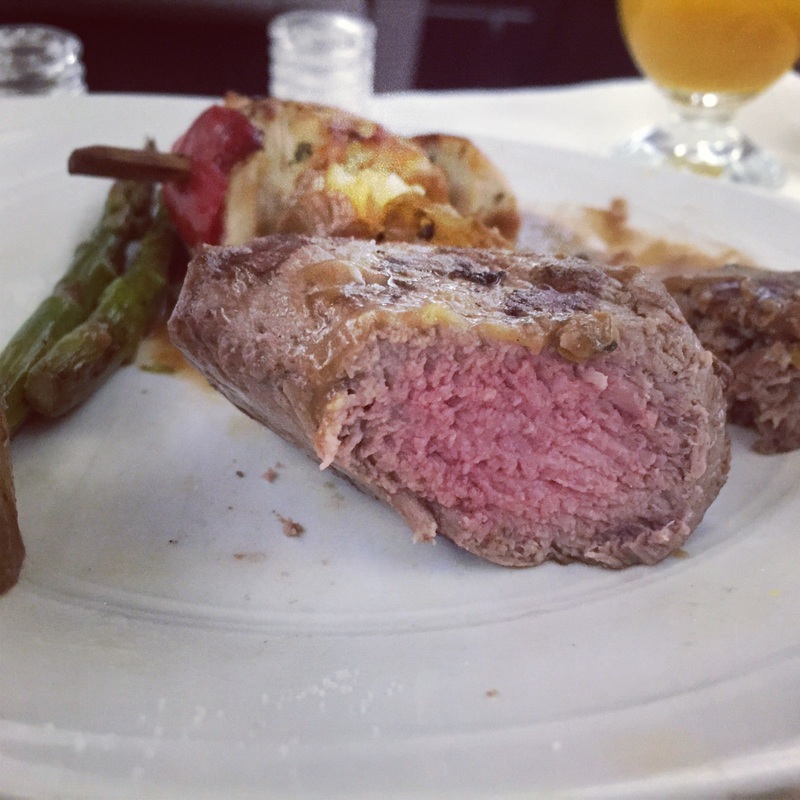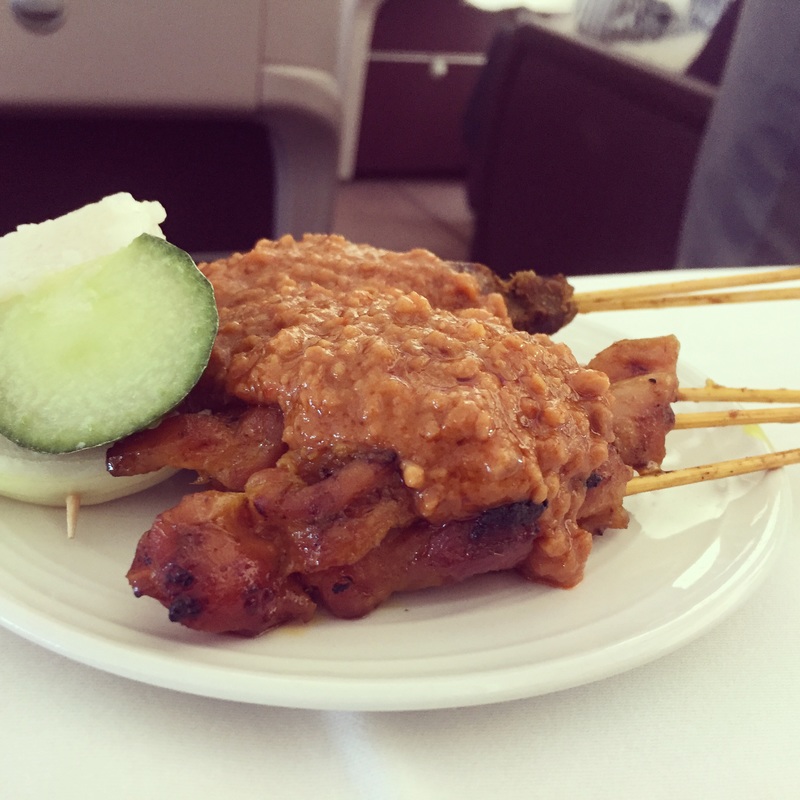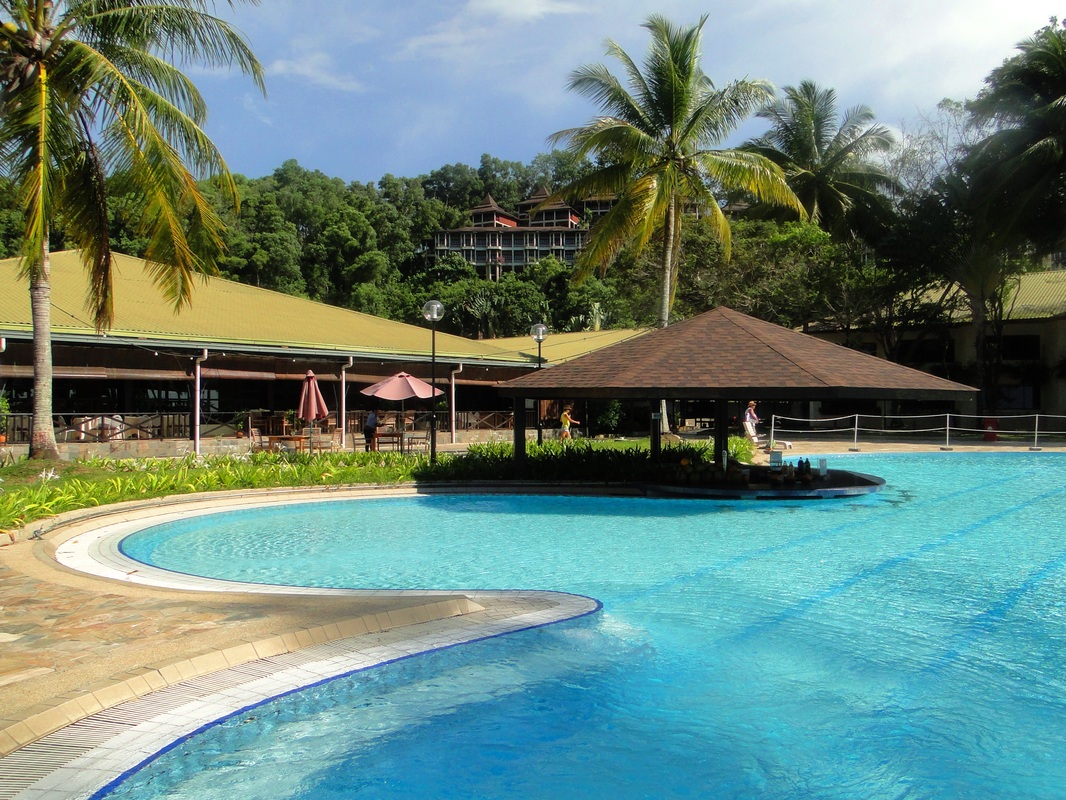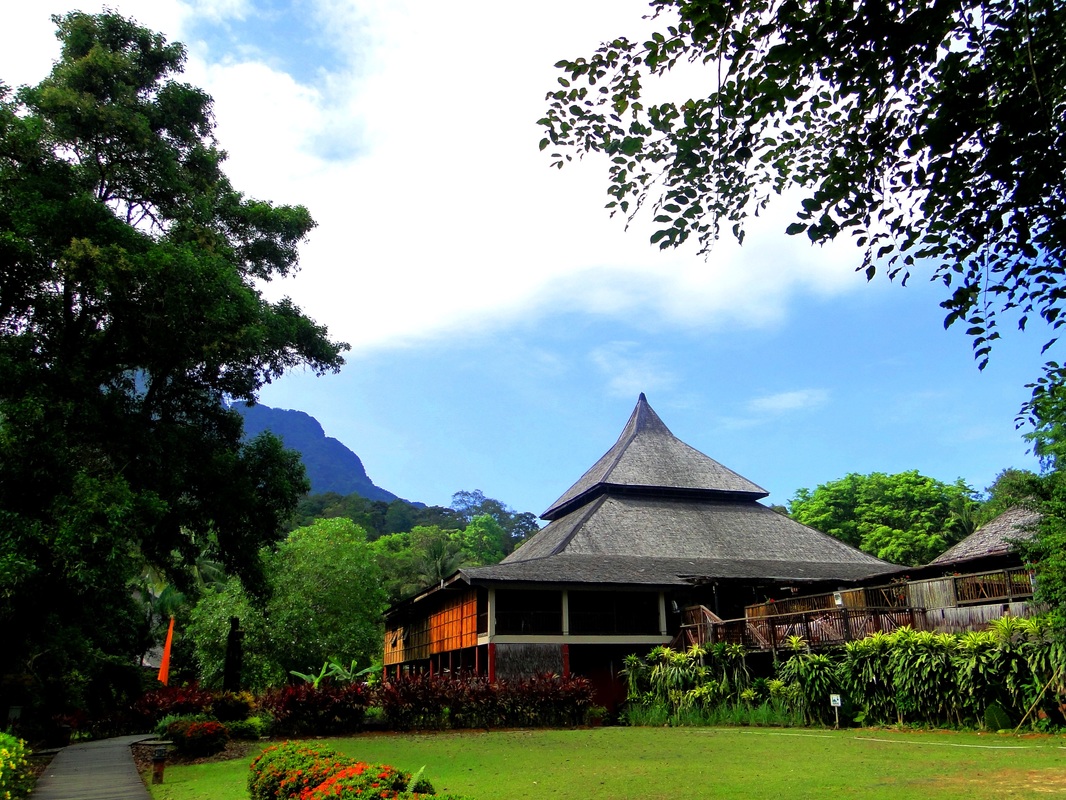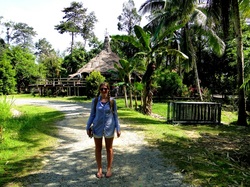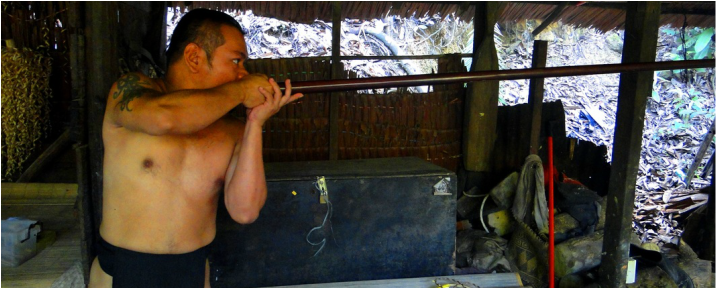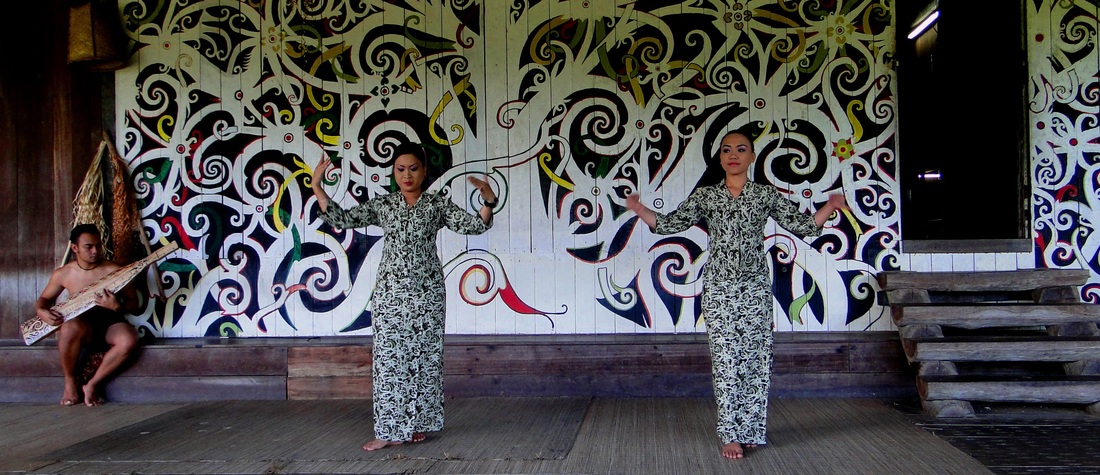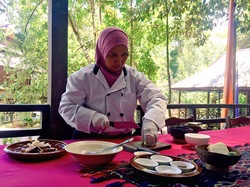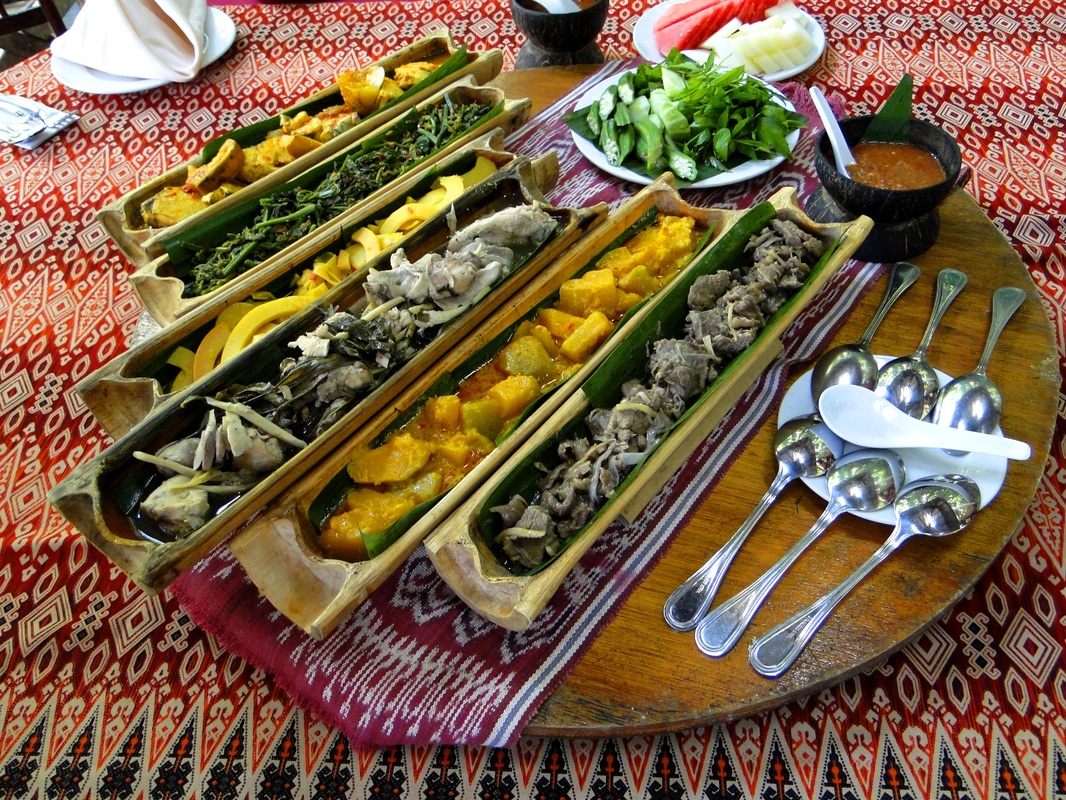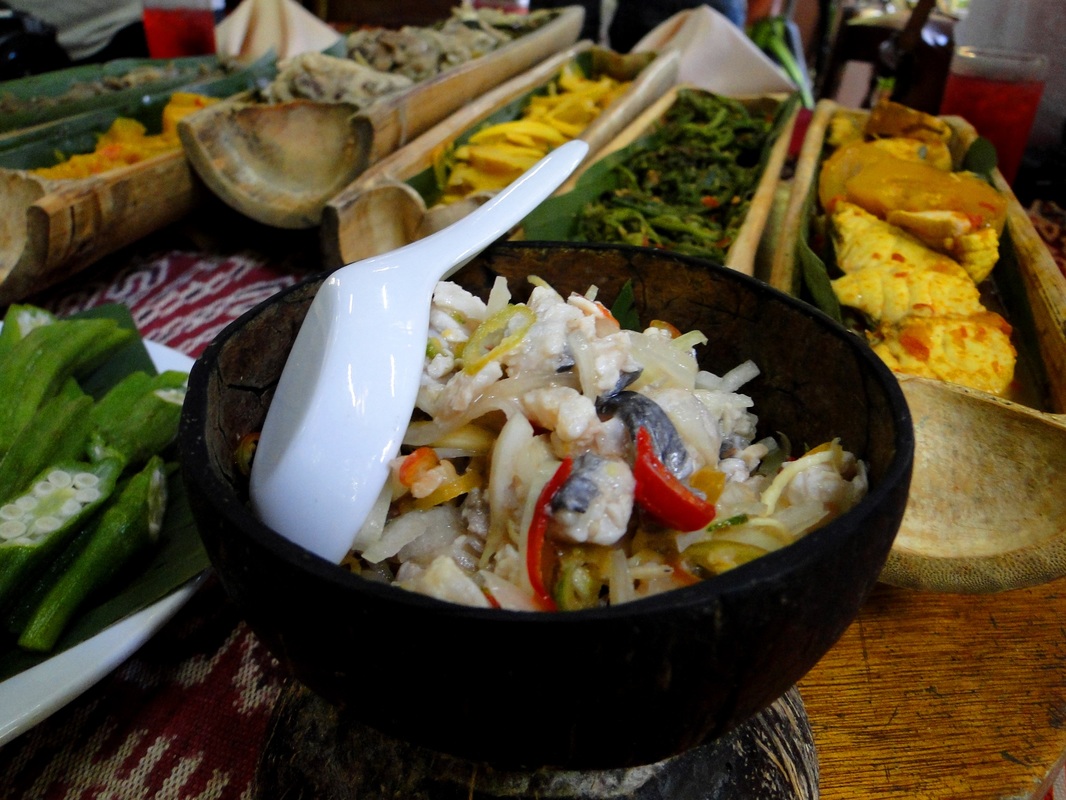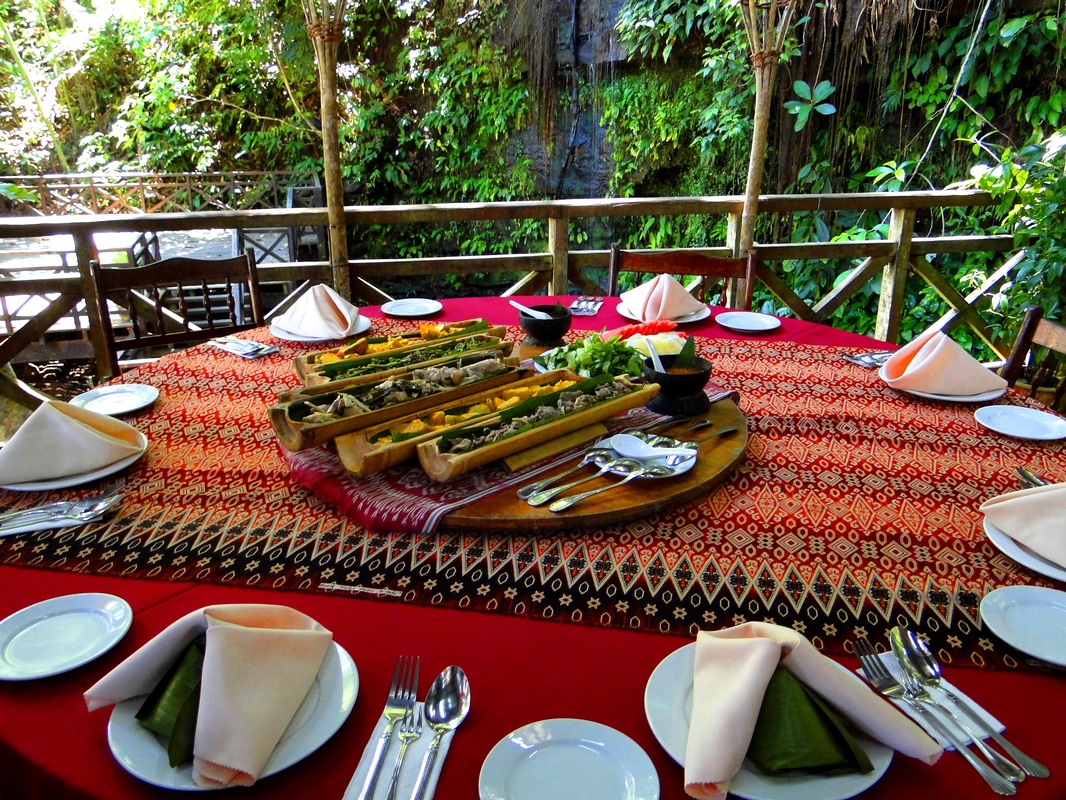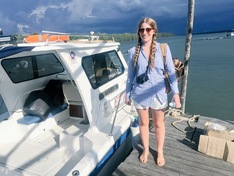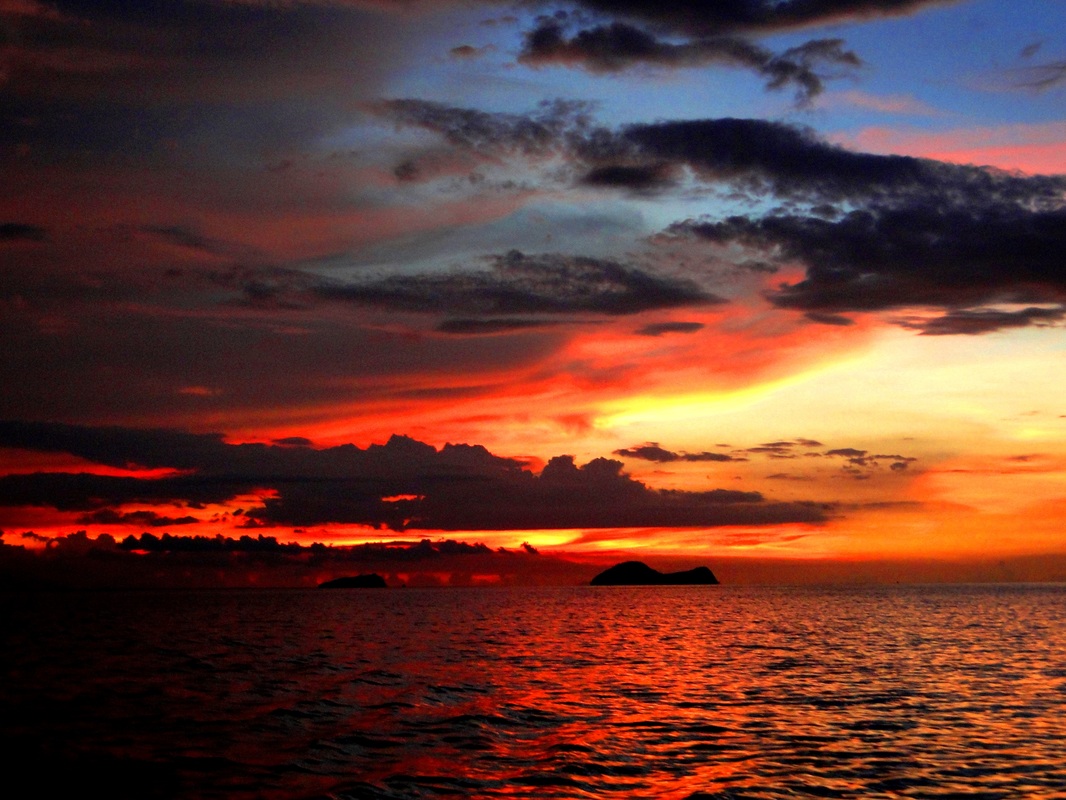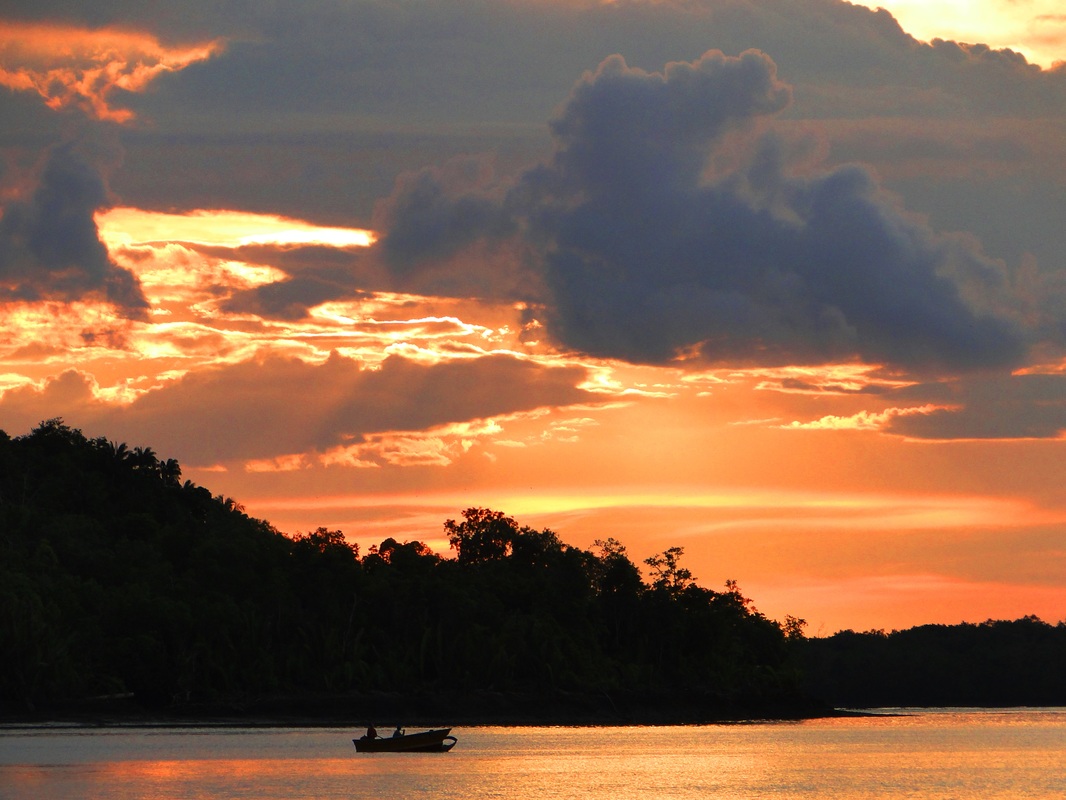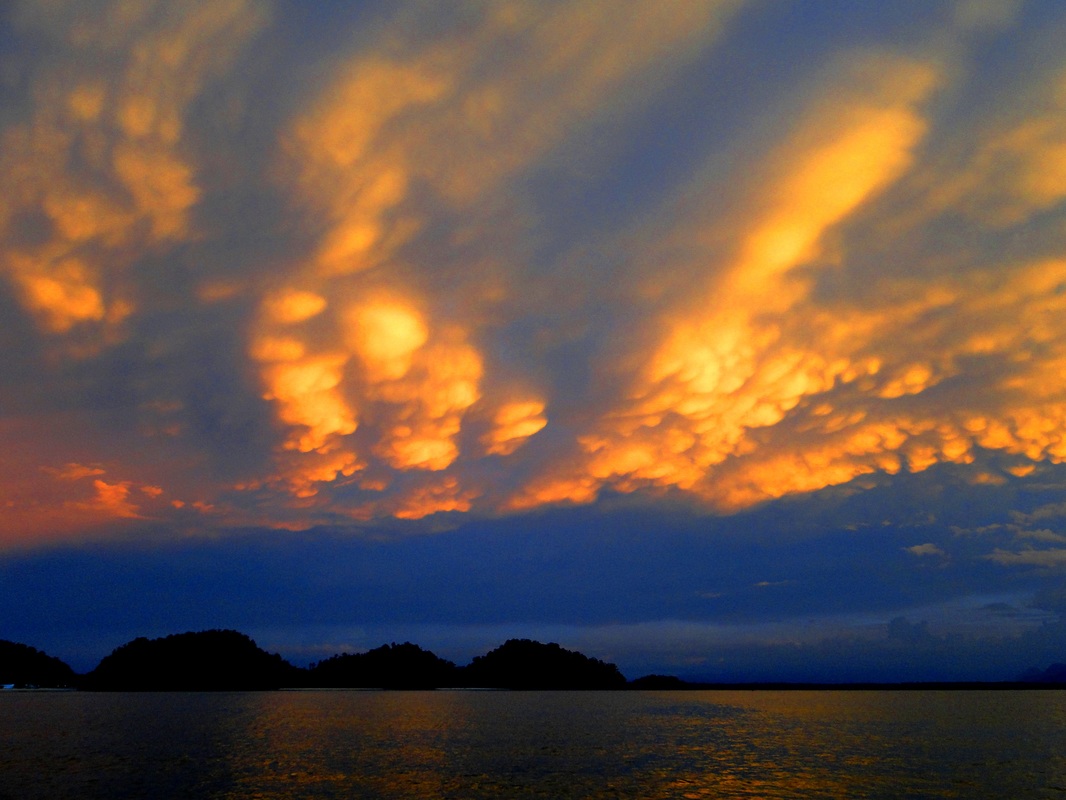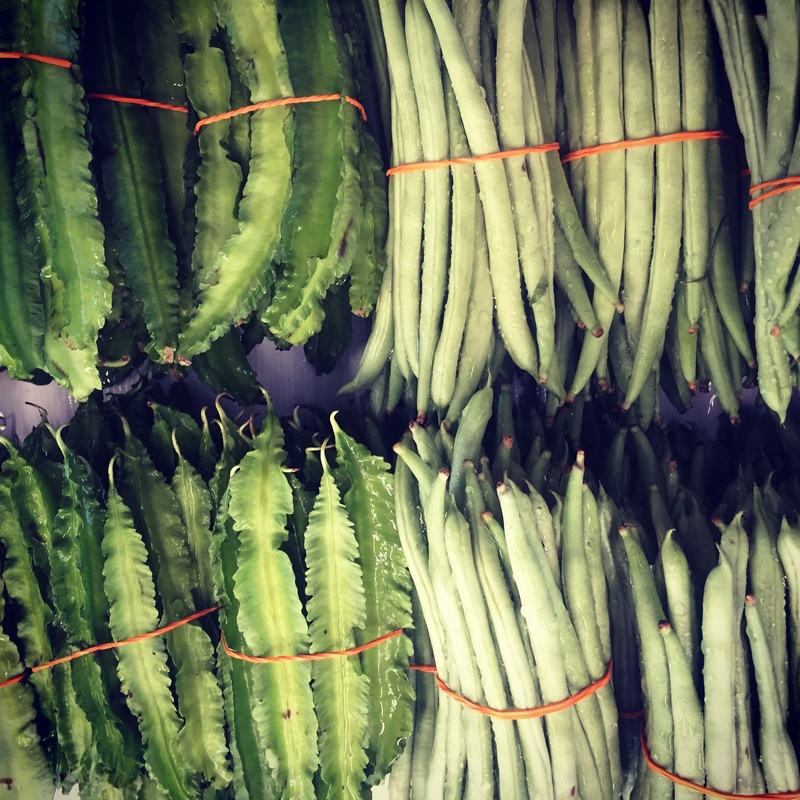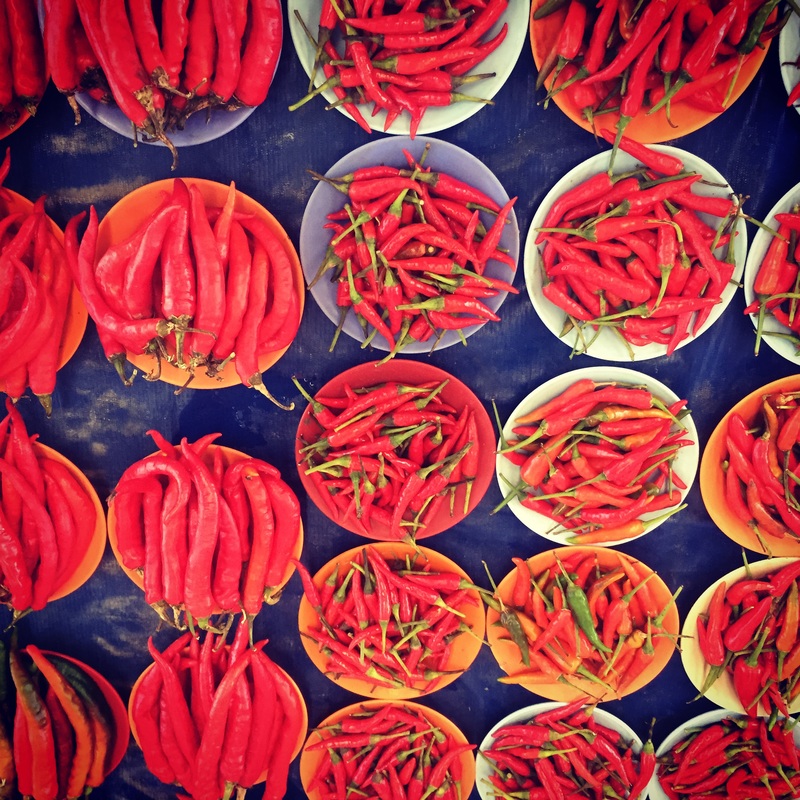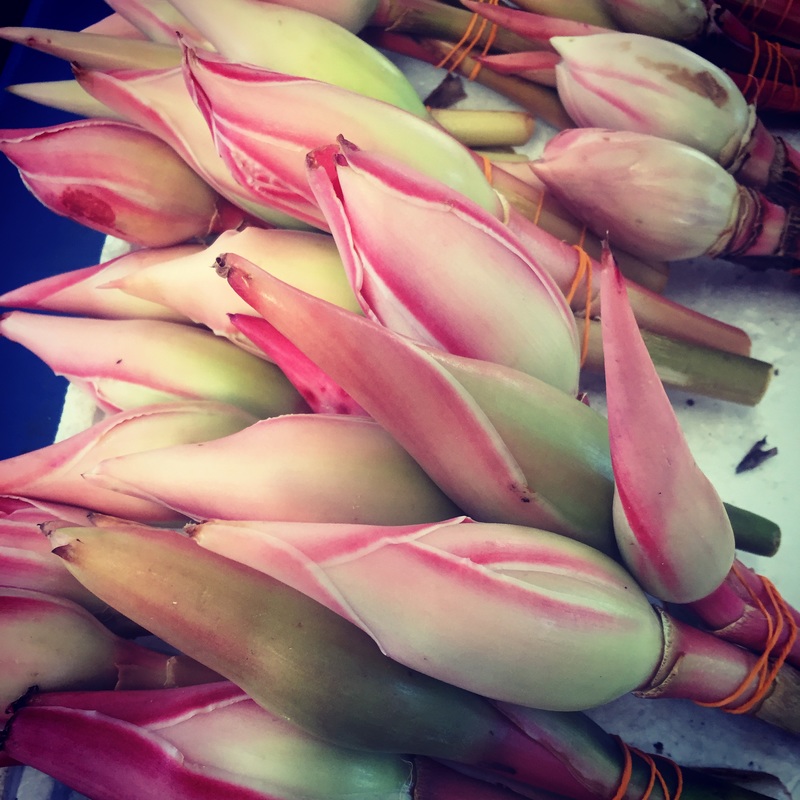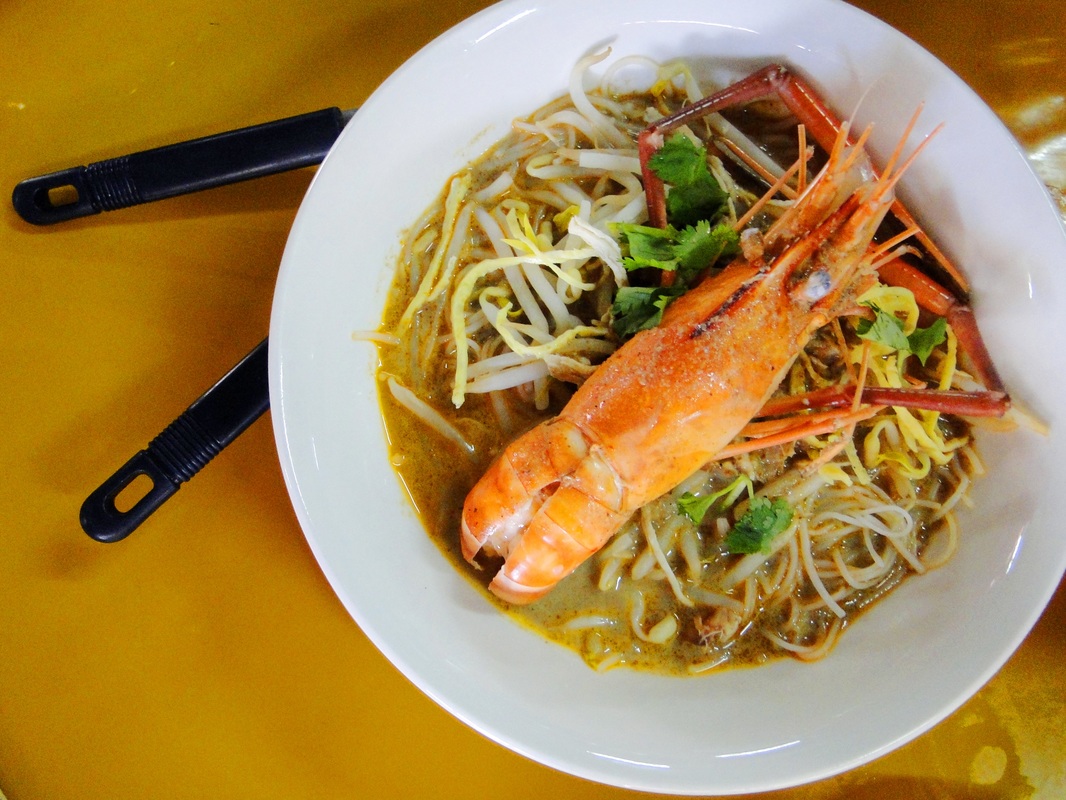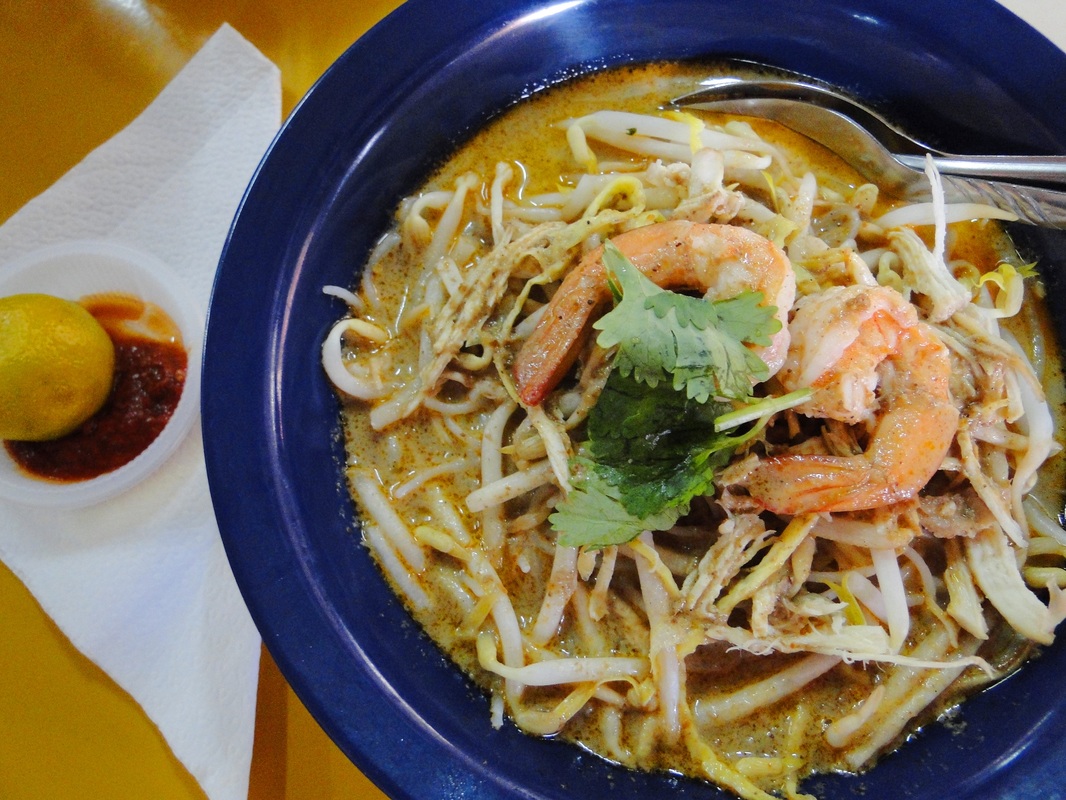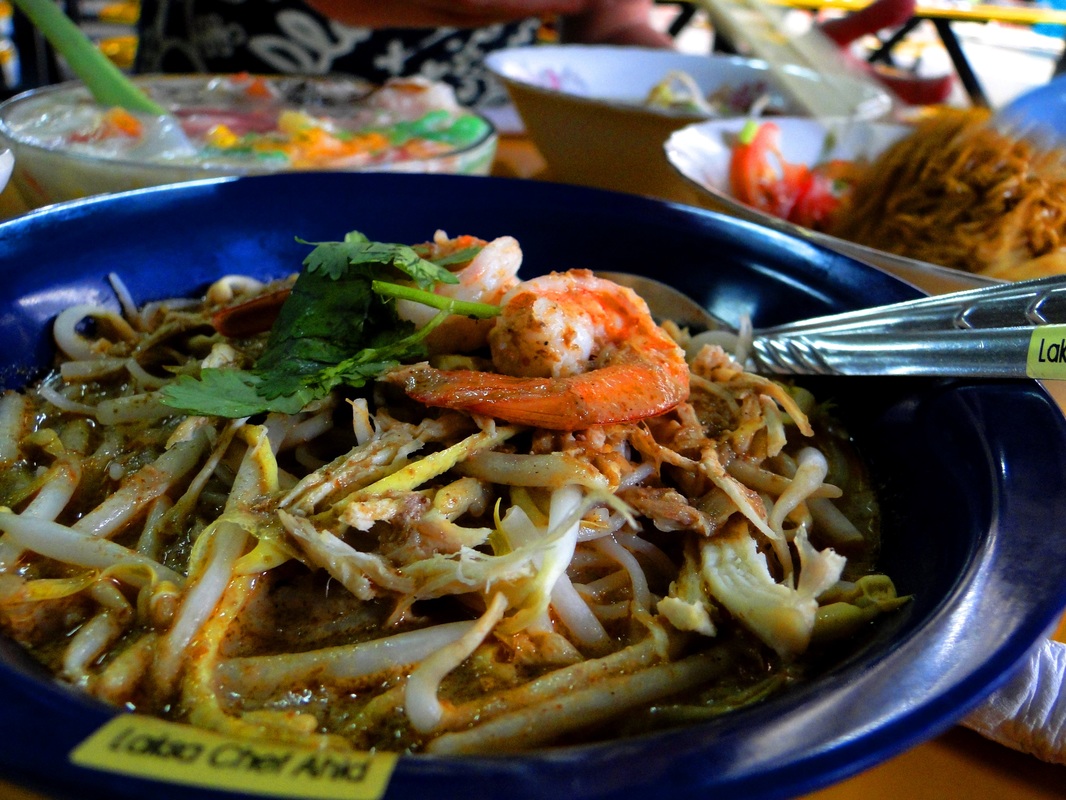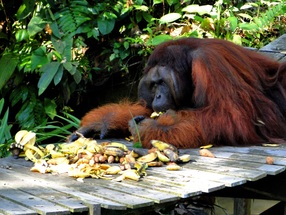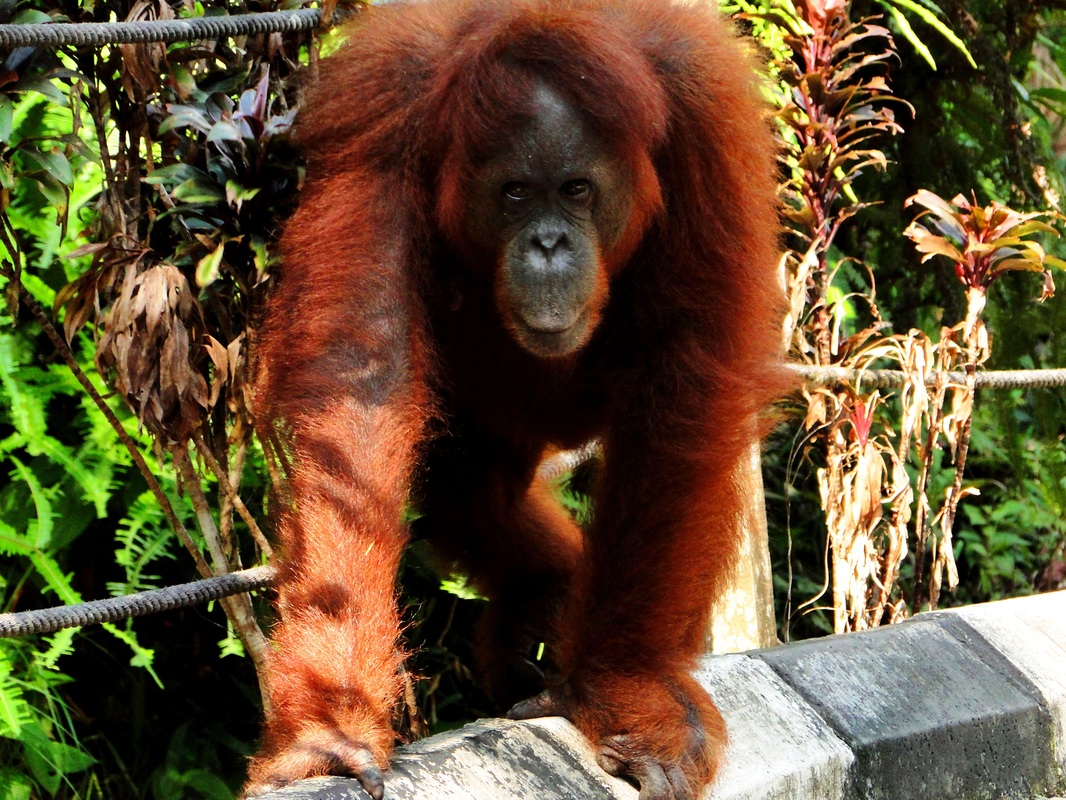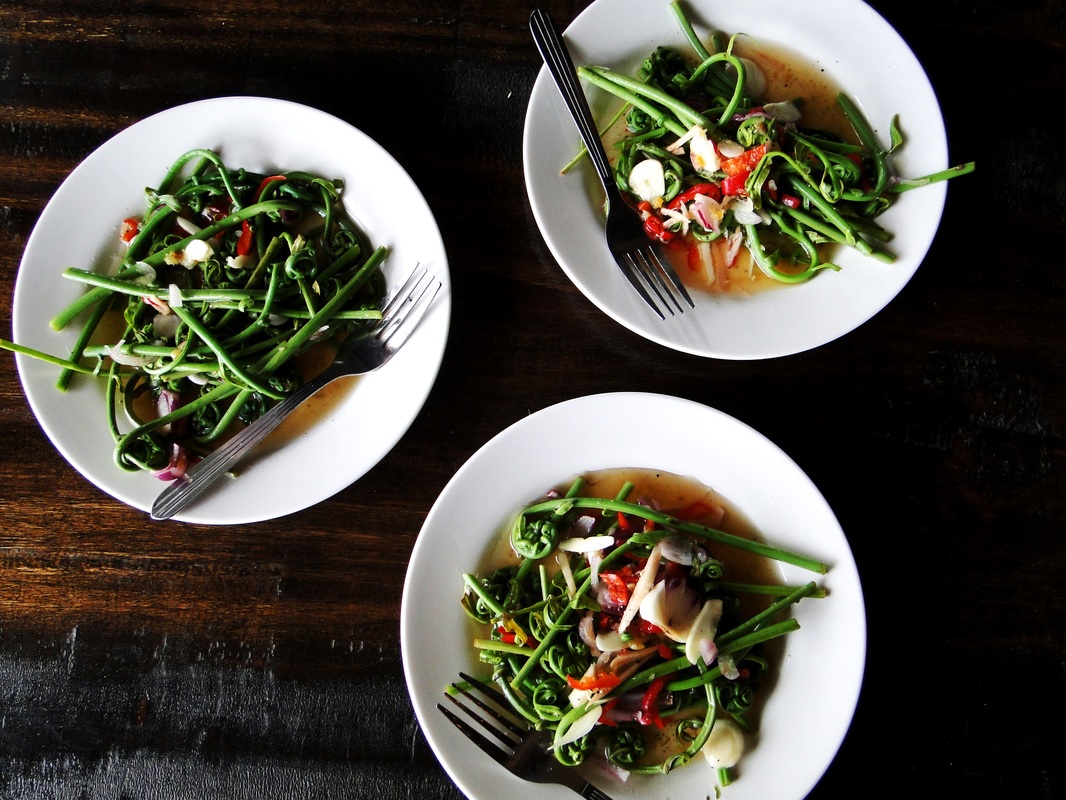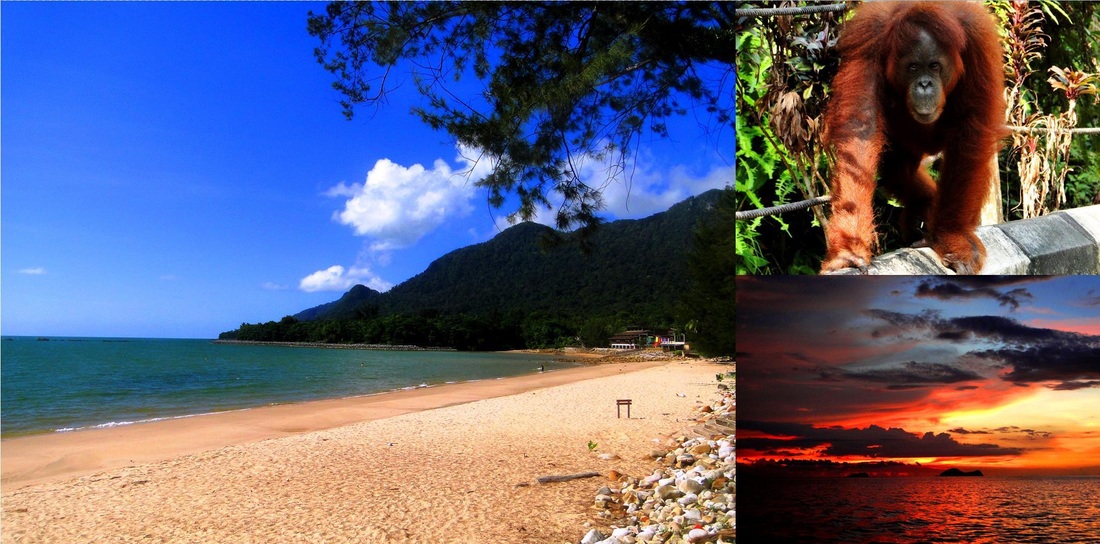
It’s 9am and I’m staked out in Heathrow Terminal 4, home of Malaysia Airlines, waiting to check in for a flight that will take me the furthest from home I’ve ever been. When I think about travelling, imagine adventure there is always one country at the tip of my tongue. It’s been on my list for so long, it’s practically engraved there. Borneo; the world’s 3rd largest island, dominated by thick, untamed rainforest inhabited only by the island’s wildlife and the yet thriving indigenous population, one of the only places in the world where wild orangutans are still found, and home to a rich cultural heritage. The island is split into a number of provinces; Malaysian Sarawak and Sabah, Indonesian Kalimantan and the tiny country of Brunei. Needless to say, with this tapestry the food is rumoured to be spectacular. It feels wild, far flung and incredibly exciting.
I’m on a food blogger trip with Malaysia Airlines. Over the next week the airline are taking us to the Sarawak region of Borneo where, led by half Malaysian YouTube chef Caroline Artiss, we’ll be exploring the sights, sounds and flavours of this vibrant region. Over this next blog I’ll take you with me from jungle to coast and I’ll try to unwrap the mysterious of this wild and mysterious destination by giving you my guide for how to discover it. For believe me, here there is everything to discover.
Let’s not kid ourselves; travelling can be dreadful. But if you plan it right, it can also kick of your trip off wonderfully and be part of your holiday experience.
Malaysia Airlines are the only carrier that offers a twice daily flight to Malaysia, through which you pass to connect to Kuching in Sarawak, with their fleet of A380s. Economy class return tickets start at around £817, with the business class tickets hitting the early three thousands.
Check into the Golden Lounge at Heathrow, if you can (eligible for One World alliance Emerald or Sapphire members/ business or first class passengers) for maximum comfort. There you can enjoy their complimentary Malaysian food, and Prosecco (totally legit after 9am).
Other foodie highlights include a medium rare steak at 40,000 feet (mental – I asked the chef in the facility and they are cooked fresh on board, only being sealed in advance). Business or First passengers can also use their Chef on Call experience; a pre-order system allowing guests to pre-select their dinner from a large Western/Malaysian menu, and economy passengers have the option to upgrade to a similar gourmet offering for £13.
The hotel is modeled on a traditional fishing village and has beach front chalets and jungle tree top rooms nestling in the actual rainforest. The food onsite is authentic and delicious and the spa is top notch, with their sunset beach massages worthy of a special mention.
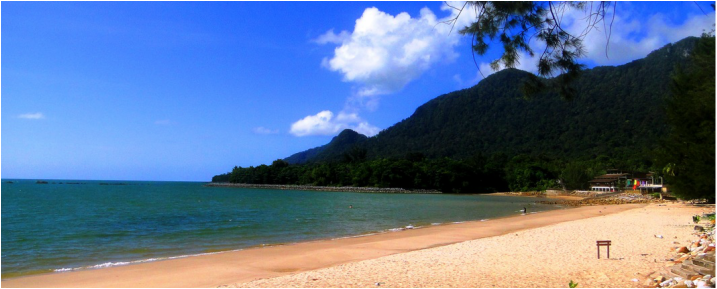
Turn this up a notch and stay in a tribal hut. The Sarawak Cultural Village have a number of these where you can stay in traditional Dayak longhouses overnight. Just watch out for critters at night; air conditioning is rare in these (although they do have fans) which normally would deter these! For a touch more luxury, The Village House homestay has a small number of stylish, comfortable rooms styled within a Longhouse theme. The food here is also excellent; try their Sarawak tasting menu for a quick hit of the region’s most well-known dishes.
City lovers may prefer to stay in Kuching city itself, Sarawak Borneo’s largest city. There the 5 star Pullman Kuching takes some beating for sleek urbanity. The rooms come with full bathtubs, glass fronted rain showers and the fastest wifi I had all trip! The hotel is slap bang in the centre of town, only a short walk from the Chinese district and city restaurants.
Let’s now turn to what to do in Sarawak Borneo; read my 3 day guide of what I got up to. Ours was a whistle stop tour – these days could easily be stretched out into a week plus stay.
Sarawak Borneo has 7 main ethic groups: Iban, Bidayuh, Penan, Orang Ulu, Melanau, Malay and Chinese. The cultural village has an area representing each group or ‘dayak’ (tribe), all laid out around a picturesque lake, enshrouded with lush vegetation and tucked into the foothills of the gigantic Mount Santubong.
The Village has many tour guides and it’s worth getting one to let you know about tribal culture and traditional architecture; most commonly a ‘Longhouse’ mounted on stilts! In each Longhouse tribal representatives were there to bring things to life, either through a welcome dance or, in the case of the nomadic Penan tribe, a blow pipe demo– even I had a go with one of these!
One of the highlights of our visit to the Village was their Cultural Show: a dance show from each of the tribes in the comfort of their air conditioned theatre. Some of the routines were truly spectacular and the dancers beautiful in their colourful costumes.
Next, we retired back to camp and I spent a long afternoon relaxing on the Teluk Bandung Beach. This has perfect white sand and warm, calm waters. The beach is relatively private and was almost empty when we were there, making it a perfect chill spot.
On top of the wildlife and jungle views, being out on the river at this time gave a front seat for hands down the best sunset I’ve ever seen. I don’t need to press this point; just look at it.
Our second day in Sarawak fell on a Saturday, coinciding perfectly for a visit to the Medan Niaga Satok Weekend Market. I love going to local markets; they’re a perfect way of cutting straight to the heart of a culture and seeing how the locals eat and drink. This market is relatively large, spanning several inside and outside areas and trading fruit, vegetables, meat, fish, spices and some clothes and general goods. Being here really impresses how far from home you are – the stands hold fruit and vegetables I’d never seen before!
The best time to visit for a chance to see these shy creatures is between 9-10am and 3-3.30 PM when feeding takes place at jungle platforms. This is truly special. You could cut the anticipation in the air with a knife as you wait in the stifling tropical humidity for them to appear. We were incredibly lucky on our visit; we saw 6 including one of the babies and the humongous Saddam! Whilst most stuck to the trees, a couple of cheeky rogues came out onto our platform. A must for any trip to Borneo.
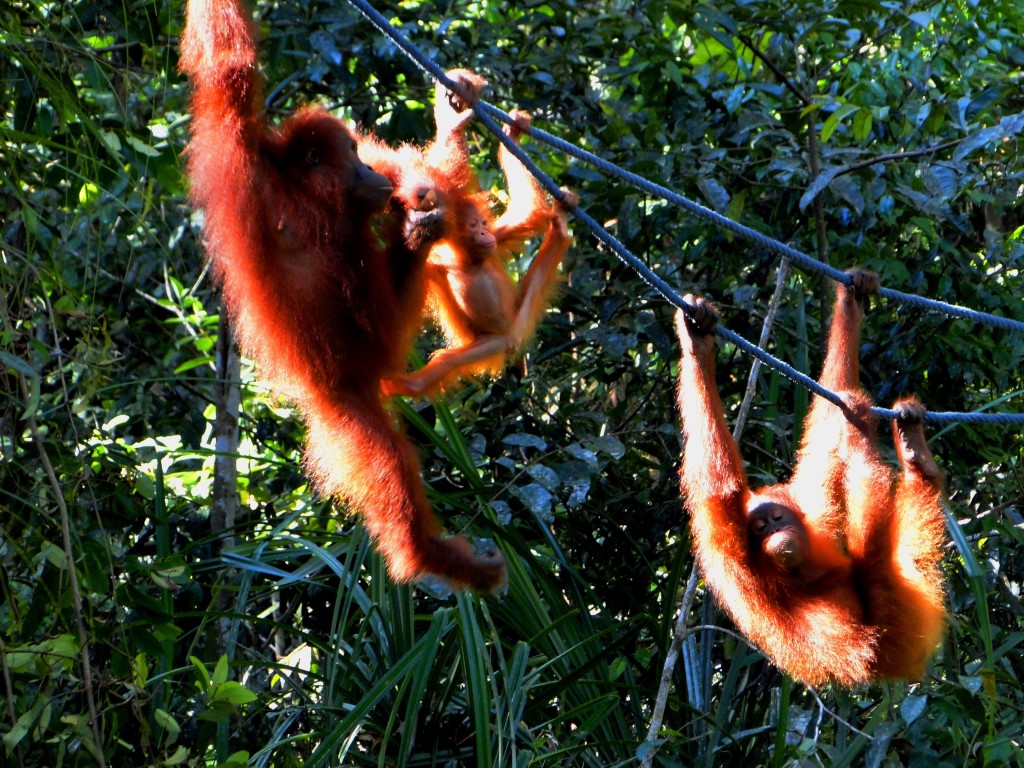
Evenings in Sarawak hold tonnes of delights too. There are great restaurants and a thriving bar scene in Kuching City itself (see Sarawak Food and Drink). Alternatively, for those more daring ones, a popular form of evening’s entertainment is karaoke. There are tonnes of these bars around, including one right next door to the Pullman Kuching Hotel! I’ve always hated it, but was dragged along by my fellow bloggers and actually…for the first time I appreciated its charms. The rooms are spacious and a table bar service runs – about the only thing that’ll get me through wailing recitals of ‘bridge over troubled water’!
Day three saw us turn our attention from the jungle into Sarawak Borneo’s city life, in its biggest city of Kuching. ‘Kuching’ is derived from the Malay word for ‘cat’, so a visit here is literally a trip to ‘cat city’! Accordingly, the city is decorated throughout with statues of cats (and there are more than a few of them slinking around!).
The city is also somewhat of a food mecca with tonnes of amazing eateries and bars. We hit the ground running with a visit to Kek Lapis Dayang Sallah bakery to try their famous kek lapis or Sarawak Layer Cake. This is a traditional celebration cake made from multi-coloured, many-flavoured layers of batter, baked together into intricate and colourful shapes. The skill involved in weaving these cakes together is quite extraordinary and the final product, absolutely delicious. The cheaper ones are made with vegetable oil, but for a few pennies more you can upgrade to butter – it’s definitely worth it.
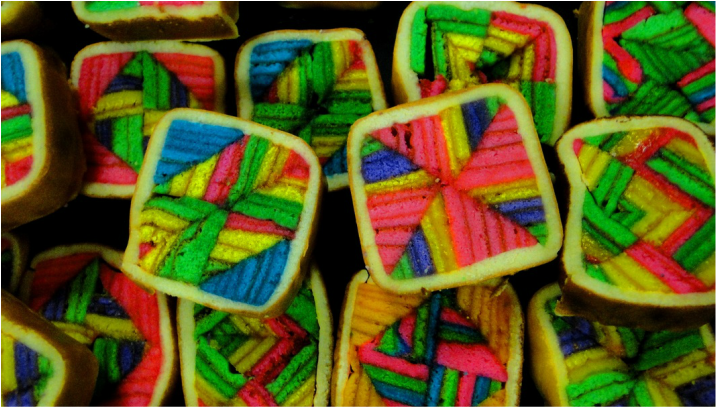
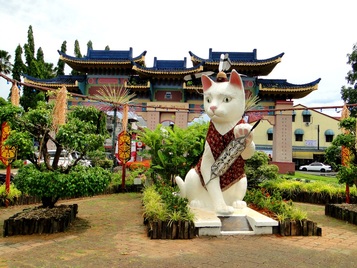 Kuching China Town is also well worth a visit. Like most China Towns it is a hive of tiny restaurants and shops, filled to the rafters with everything under the sun. Potter in the shops for lovely antique goods, gold and jewels – there are bargains here to be had.
Kuching China Town is also well worth a visit. Like most China Towns it is a hive of tiny restaurants and shops, filled to the rafters with everything under the sun. Potter in the shops for lovely antique goods, gold and jewels – there are bargains here to be had.
Also in this area are a number of Chinese Temples which are studies in grandiose, vibrantly coloured architecture.
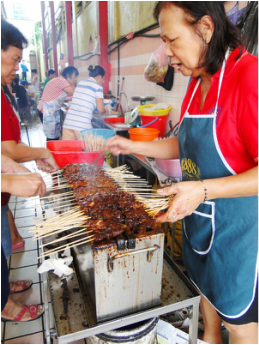 One such temple sits on Carpenter Street – head here around lunch for some of the best street food in the area. In the shadow of this temple is the famous Lau Ya Keng food court the name of which roughly translates as ‘crappy place’! This is anything but – it serves some of the best pork satay I’ve had, straight off traditional mangrove charcoal grills. The atmosphere is bustling and along with the satay you can get excellent Sarawak laksa, kolo mee – all at street food prices!
One such temple sits on Carpenter Street – head here around lunch for some of the best street food in the area. In the shadow of this temple is the famous Lau Ya Keng food court the name of which roughly translates as ‘crappy place’! This is anything but – it serves some of the best pork satay I’ve had, straight off traditional mangrove charcoal grills. The atmosphere is bustling and along with the satay you can get excellent Sarawak laksa, kolo mee – all at street food prices!
Sadly we missed the Old Market or Lau Pa Sat; but this is said to have a number of awesome street food stalls.
Next, to the Bratak Malau Café, at Telang Usan Hotel, for a Sarawak cookery class! This is a picturesque leafy outside café linked to the hotel, offering cookery classes in typical local dishes. Led by the chef, we were taken through Umai, a ceviche like dish made with mackerel and spiced with chili, Pansoh Manok, chicken cooked in bamboo, Sarawak Laksa and Midin Kerabu, rainforest ferns blanched and spiced. This was really great; chef was full of useful tips and pieces of food lore and we were given the paper recipes to take away . I’d recommend doing this either early morning or early evening to avoid the heat.
A few final words…Sarawak Borneo is a destination for those with a greed for the extraordinary. It is the exotic, the experience of the utterly foreign, a place in a word; adventure. It won’t feel like home here, but that’s why you come.
My thanks to Malaysia Airlines for introducing me to this spectacular place with all of its wonderful food. Hisham, Bettina and Ikhwan, you are great and made this possible. Thanks to the Sarawak Tourism Board for all their guidance. A particular thanks to Ollie from PCC for dealing with all our terrible blogger nonsense and incessant whining for wifi. Further thanks to Caroline Artiss for sharing her family memories with me and to my fellow bloggers: The Boy Who Ate The World, Eat Like A Girl, Mondo Mulia, The London Foodie and Food Stories. Together you made this trip even more special.

